Abstract
DNA sequence and restriction map data from natural populations can be used to estimate the phylogenetic history of observed sequences. Studies of this sort usually examine large regions of DNA where many evolutionary events have taken place. From such data, detailed phylogenies can be constructed and qualitatively different kinds of mutational and substitutional processes can be studied. The value of investigating more than one mutational type is in the power of comparing relative rates of these distinct substitutional processes. In this paper, we construct a neutral model to describe the frequencies of sequence haplotypes according to the haplotypes from which they arose. This theory of the frequency of haplotypes (incorporating their historical past) is applied to data from the alcohol dehydrogenase gene region of Drosophila melanogaster. The observed patterns of change associated with transposable elements around the Adh locus are not in accord with a neutral model. Values for the mutation rates cannot be found that will bring the observed data into agreement with a simple neutral model, but with the addition of mildly deleterious selection, the model can explain these patterns of change. These results suggest that transposable elements are deleterious to the organisms carrying them, but at levels only several times their rate of transpositional insertion. Similar analyses of small deletions in the Adh region suggest that they may experience mildly deleterious selection.
Full text
PDF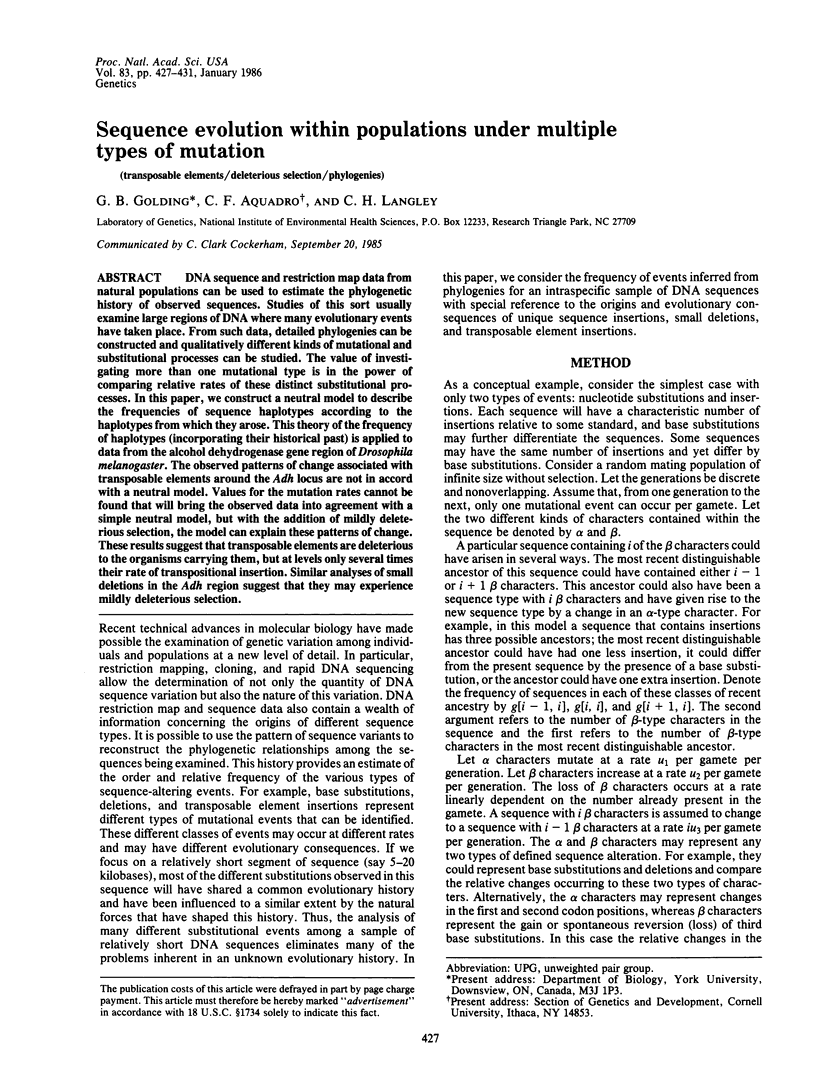
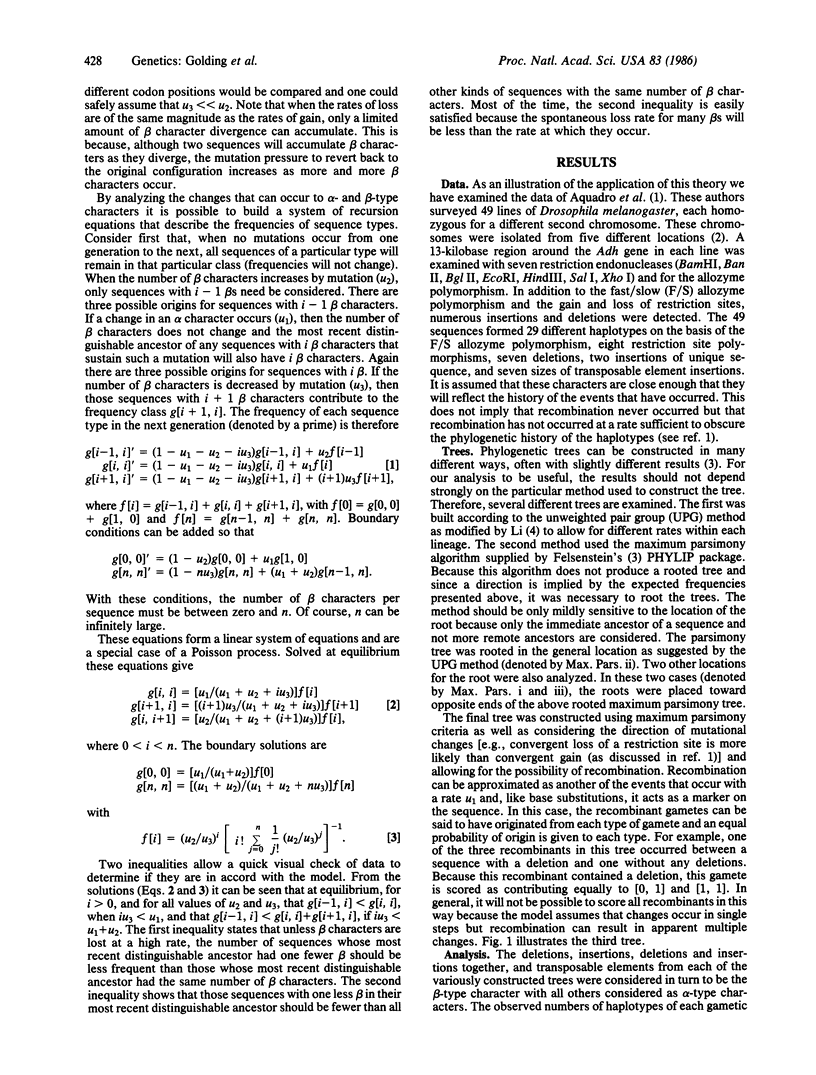
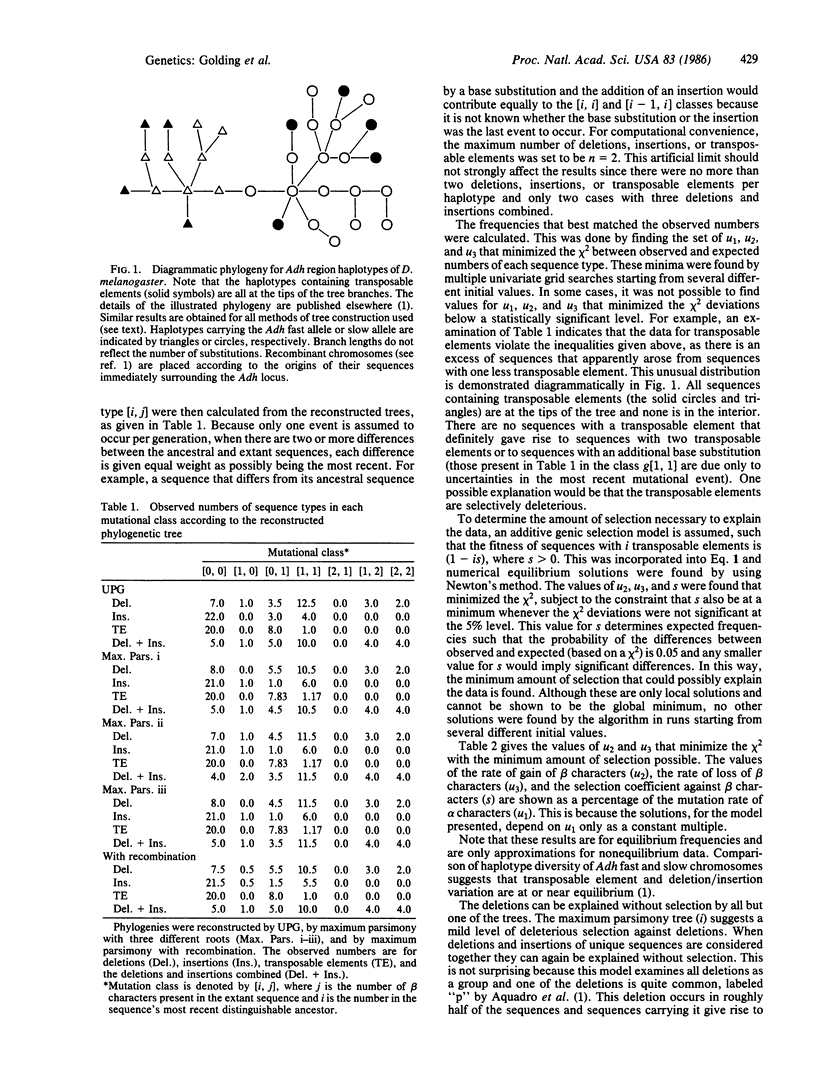
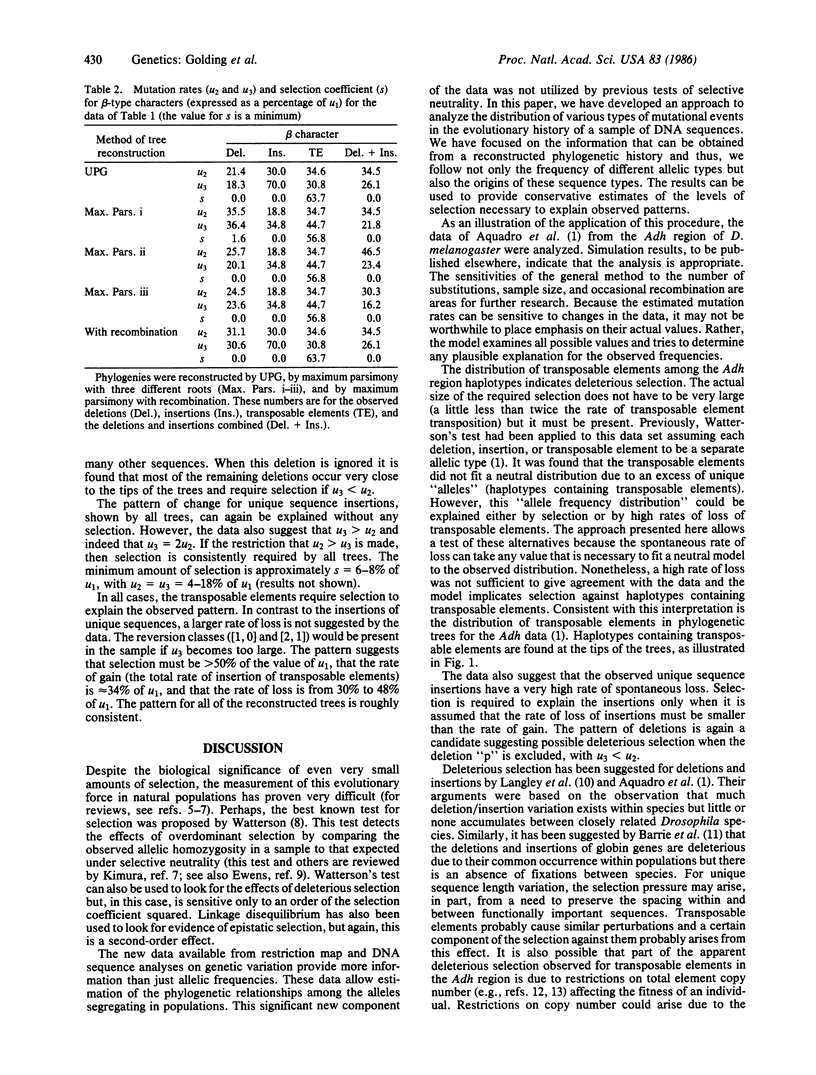
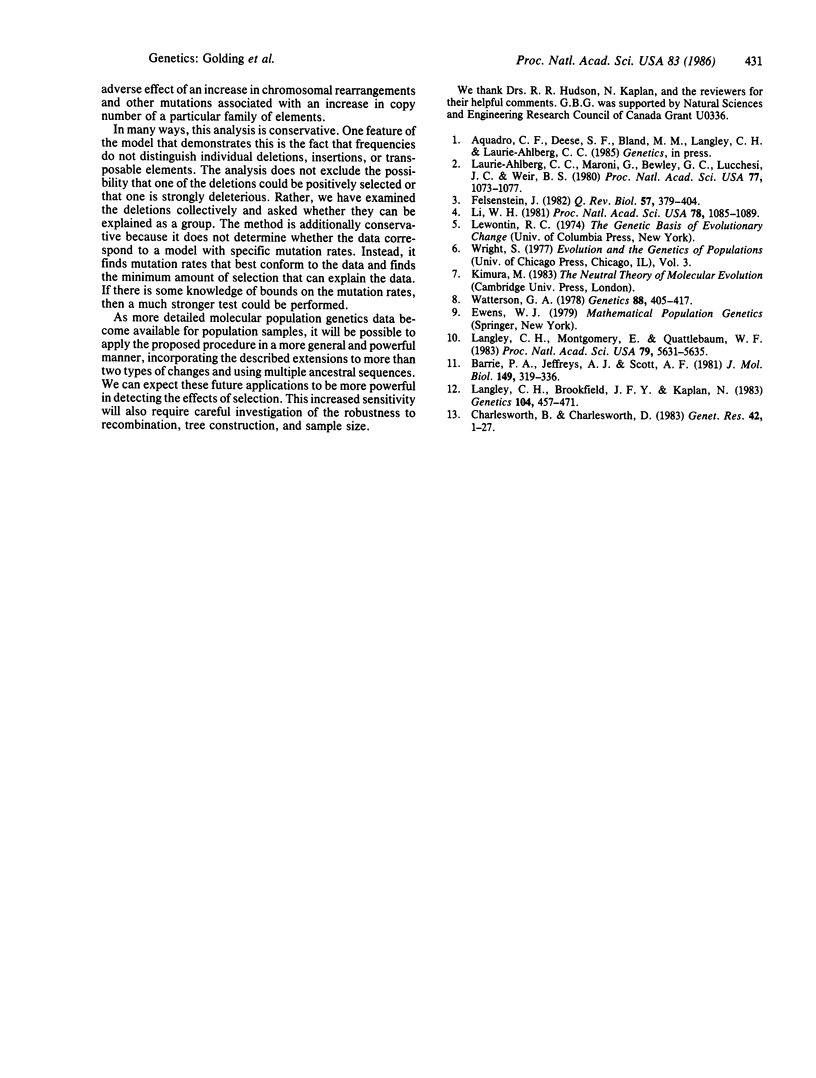
Selected References
These references are in PubMed. This may not be the complete list of references from this article.
- Barrie P. A., Jeffreys A. J., Scott A. F. Evolution of the beta-globin gene cluster in man and the primates. J Mol Biol. 1981 Jul 5;149(3):319–336. doi: 10.1016/0022-2836(81)90476-9. [DOI] [PubMed] [Google Scholar]
- Langley C. H., Brookfield J. F., Kaplan N. Transposable elements in mendelian populations. I. A theory. Genetics. 1983 Jul;104(3):457–471. doi: 10.1093/genetics/104.3.457. [DOI] [PMC free article] [PubMed] [Google Scholar]
- Langley C. H., Montgomery E., Quattlebaum W. F. Restriction map variation in the Adh region of Drosophila. Proc Natl Acad Sci U S A. 1982 Sep;79(18):5631–5635. doi: 10.1073/pnas.79.18.5631. [DOI] [PMC free article] [PubMed] [Google Scholar]
- Laurie-Ahlberg C. C., Maroni G., Bewley G. C., Lucchesi J. C., Weir B. S. Quantitative genetic variation of enzyme activities in natural populations of Drosophila melanogaster. Proc Natl Acad Sci U S A. 1980 Feb;77(2):1073–1077. doi: 10.1073/pnas.77.2.1073. [DOI] [PMC free article] [PubMed] [Google Scholar]
- Li W. H. Simple method for constructing phylogenetic trees from distance matrices. Proc Natl Acad Sci U S A. 1981 Feb;78(2):1085–1089. doi: 10.1073/pnas.78.2.1085. [DOI] [PMC free article] [PubMed] [Google Scholar]
- Watterson G. A. The homozygosity test of neutrality. Genetics. 1978 Feb;88(2):405–417. doi: 10.1093/genetics/88.2.405. [DOI] [PMC free article] [PubMed] [Google Scholar]


